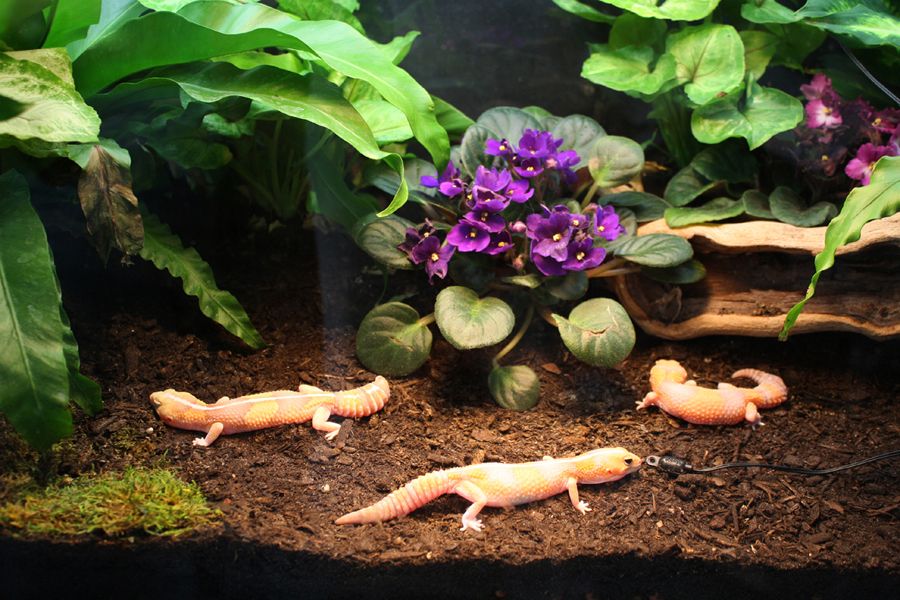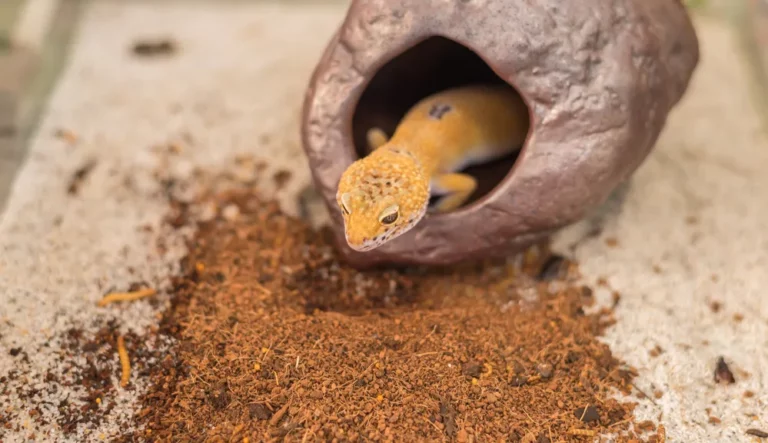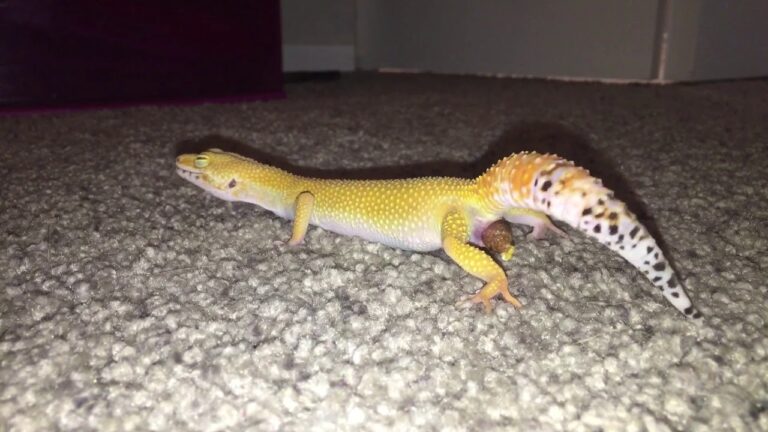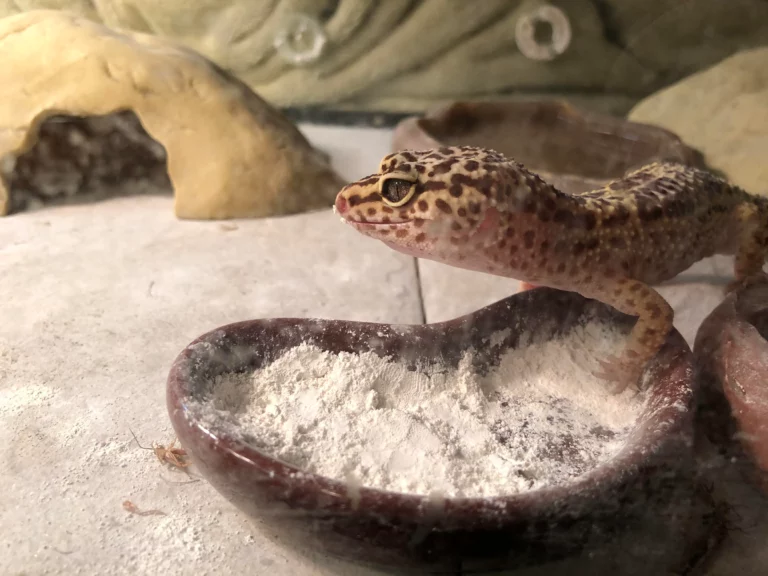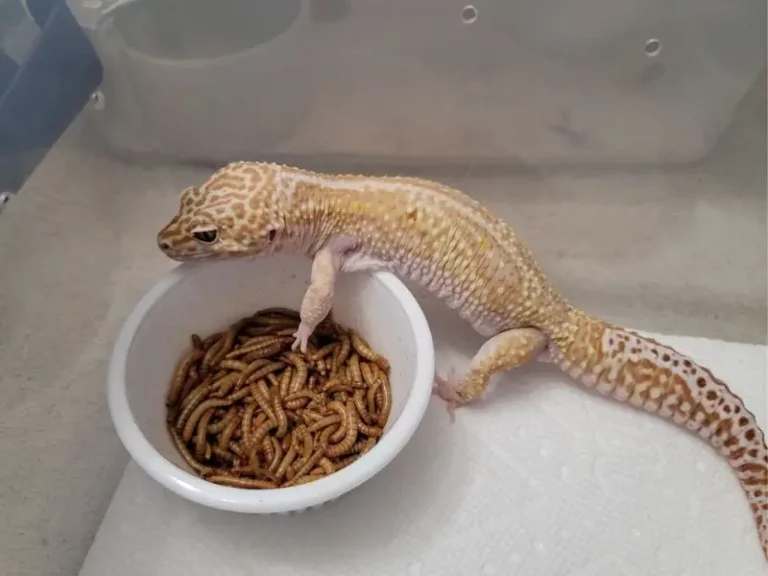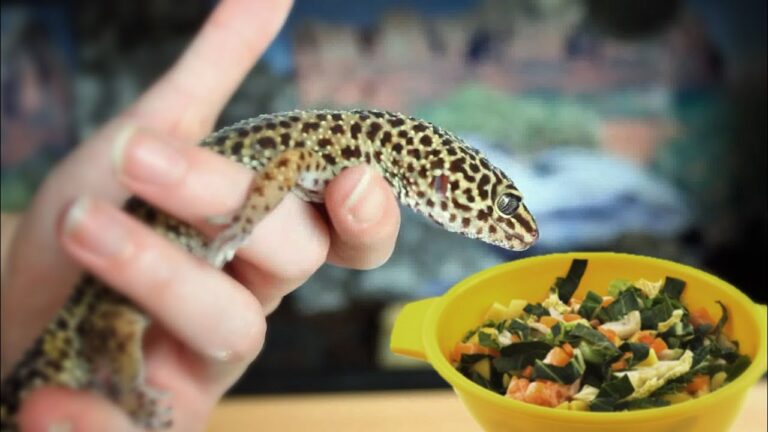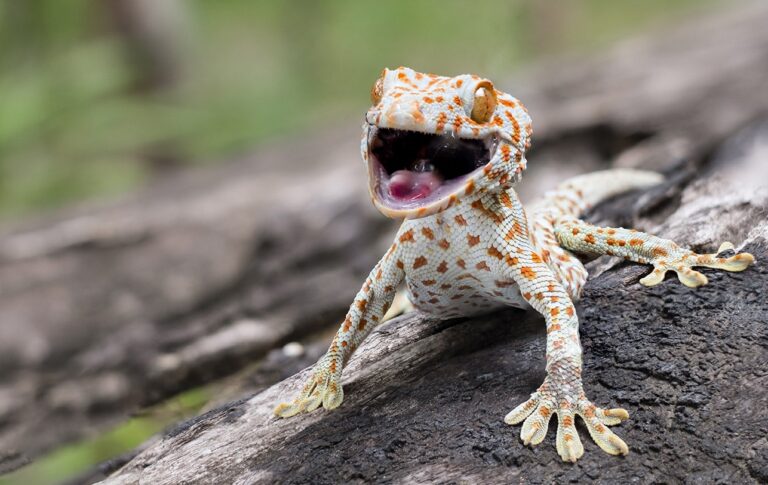Is Eco Earth Good For Leopard Geckos? Let’s Uncover The Natural Haven
As I sat in the soft glow of my terrarium’s heat lamp, observing my beloved pet , I couldn’t help but reflect on the journey that had led me to discover Eco Earth as a substrate for my scaly companion.
However, It was a crisp autumn afternoon when I first welcomed my adorable leopard gecko into my home. Her intricate patterns and gentle demeanor captured my heart, and I was determined to create the perfect habitat for her. That’s when my quest for the ideal substrate began.
So, YES. Eco Earth is okay for leopard geckos, but some people aren’t sure about it. There are better, safer, and cheaper substrate choices. Those are the ones reptile owners should go for.
Join me on this enlightening adventure as we unravel the secrets of Eco Earth and discover whether it is indeed the ideal choice for the well-being of our scaly companions.
What is Eco Earth?
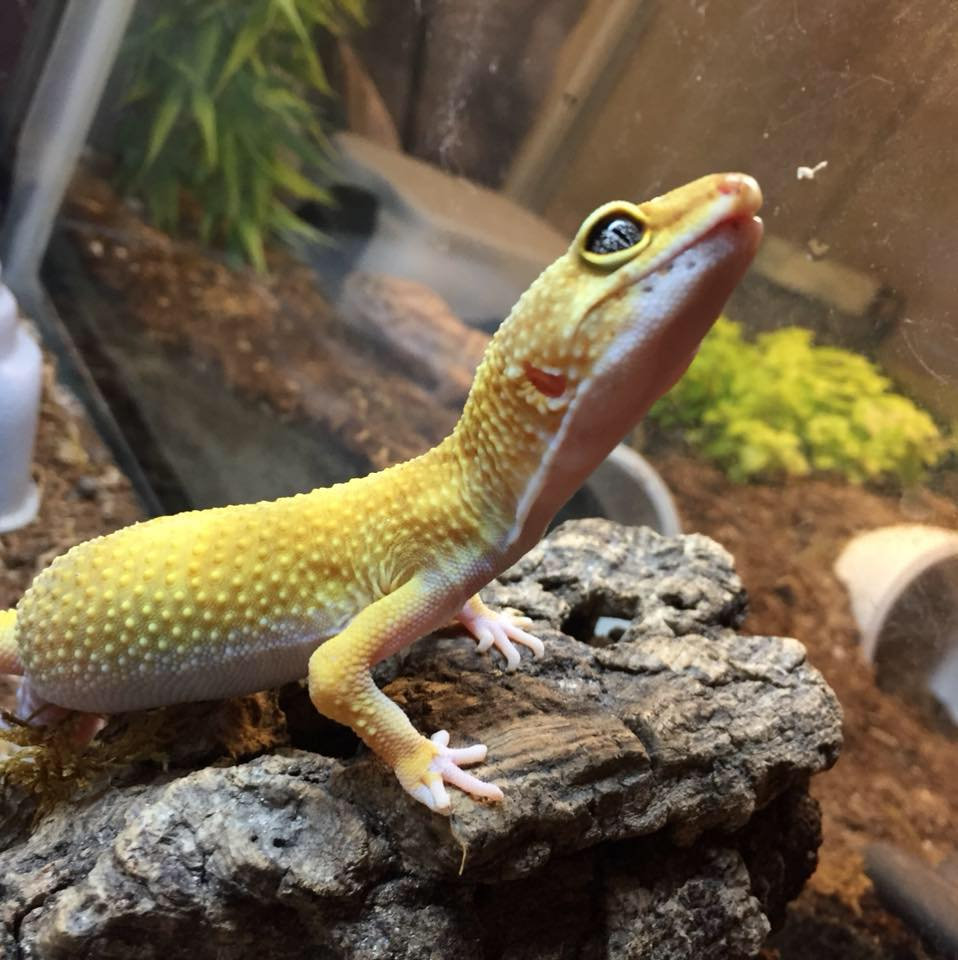
Eco Earth is a type of substrate commonly used in reptile enclosures, including those for leopard geckos. It is made from natural materials, primarily coconut husks, and is known for its moisture-retaining properties. Eco Earth is often used in terrariums and vivariums to create a suitable environment for reptiles.
What are the benefits of using eco earth for leopard geckos?
Eco Earth substrate offers a plethora of advantages that make it the top choice it enthusiasts. Let’s delve into these compelling benefits:
First and foremost, this option is renowned for its impeccable eco-friendliness. Crafted from renewable and natural materials, primarily coconut husks, it leaves a minimal ecological footprint, aligning perfectly with our commitment to sustainability.
Moreover, its moisture management capabilities are truly remarkable. This substrate excels at regulating humidity levels within the terrarium, ensuring your leopard gecko’s habitat maintains the ideal moisture balance for their well-being.
Comfort underfoot is paramount for our gecko companions, and this option delivers in this department. Its soft and cushiony texture provides a pleasant walking surface, resembling the natural terrain of their native habitat.
Cost-effectiveness is yet another feather in its cap. Unlike some pricier alternatives, this substrate offers high-quality benefits without denting your wallet, making it a budget-friendly choice for leopard gecko owners.
Safety takes center stage as well. The substrate is non-toxic and safe if accidentally ingested, a crucial consideration since leopard geckos are prone to exploring their surroundings with their tongues. This peace of mind is invaluable for responsible pet care.
What are the disadvantages of using eco earth for leopard geckos?
Humidity Levels: This substrate’s excellent moisture retention can lead to elevated humidity levels within the enclosure. It hailing from arid desert habitats, are not naturally inclined to thrive in humid conditions. Excess moisture can also foster mold growth, posing risks to their respiratory and skin health.
Respiratory Challenges: In its dry state, this substrate can become quite dusty, potentially causing respiratory issues or infections. The warmer temperatures required for them can make the coconut fibers fluffy and easily inhalable. Untreated respiratory infections can escalate, often necessitating a visit to an exotic reptile veterinarian and potential antibiotic treatment.
Impaction Concerns: Many impaction issues in they are attributed to the substrates used. Loose substrates, including the soft, dry, fluffy coconut fibers, pose a risk as geckos may accidentally ingest them. While small quantities are digestible to some extent, significant consumption can lead to impaction and related health complications.
Cost Considerations: This substrate tends to be pricier compared to alternatives for leopard geckos. Additionally, its high moisture absorption necessitates frequent substrate changes to maintain hygiene and prevent issues arising from waste absorption.
Joint Strain: An infrequently discussed concern is the strain that this substrate can place on leopard gecko joints. Its loose texture may make it more challenging for leopard geckos to walk on for extended periods, potentially contributing to joint health problems.
How to mix and use eco earth for your leopard gecko
Materials: Gather the substrate and water you need. For mixing, use one part of the substrate to two parts water.
Mixing Process: For example, if you have a 10-gallon tank, combine 5 gallons of the substrate with 10 gallons of water. Thoroughly blend the mixture using a whisk or spoon until it reaches a consistent moisture level.
Setting the Scene: Once the substrate is adequately moistened, carefully distribute it in the habitat. Shape the substrate to create the desired landscape features for your leopard gecko.
Habitat Arrangement: Introduce your leopard gecko to its new home. Ensure there are ample hiding spots and basking areas to make your reptile friend feel comfortable.
Alternatives best option:
1. Newspaper or Paper Towels:
- Cost-effective and gentle on Leo’s skin.
- Low impaction risk and easy to replace, keeping the enclosure hygienic.
- May not provide a natural look but can be found in beige or green tones for a more aesthetic appearance.
- Cleaning is essential, as it absorbs moisture and waste.
2. Reptile Carpets:
- Easy-to-use, budget-friendly option.
- Reusable and requires replacement every six to twelve months.
- Soft and non-abrasive, minimizing scratch risks.
- Regular cleaning is crucial for maintaining Leo’s health.
3. Stone Tiles and Slate Slabs:
- Slightly more expensive but offers a natural and attractive appearance.
- Easily cleaned and reusable, with no impaction risk.
- Helps retain heat and resembles Leo’s rocky, arid habitat.
- Placing Leo’s water bowl on the slate or slab can prevent sand ingestion.
4. Stones and Pebbles:
- Popular for creating a natural enclosure look.
- Inspect for sharp or jagged-edged stones before use.
5. Clay (Excavator’s Clay or Self-Hardening Clay):
- Natural and safe for burrowing.
- Long-lasting with proper maintenance, although misting may be required.
- Messy to work with but ideal for molding tunnels and caves.
6. Shelf Liner Options:
- Practical, affordable, and easy to clean.
- Replacement is needed every couple of months.
- Safe if cleaned regularly but prone to bacterial growth if hygiene is neglected.
- Choose non-adhesive liners to avoid toxicity when heated.
- Ensure no holes in the liner to prevent claw entrapment and waste leakage.
Choosing the Right Substrate for Leopard Geckos
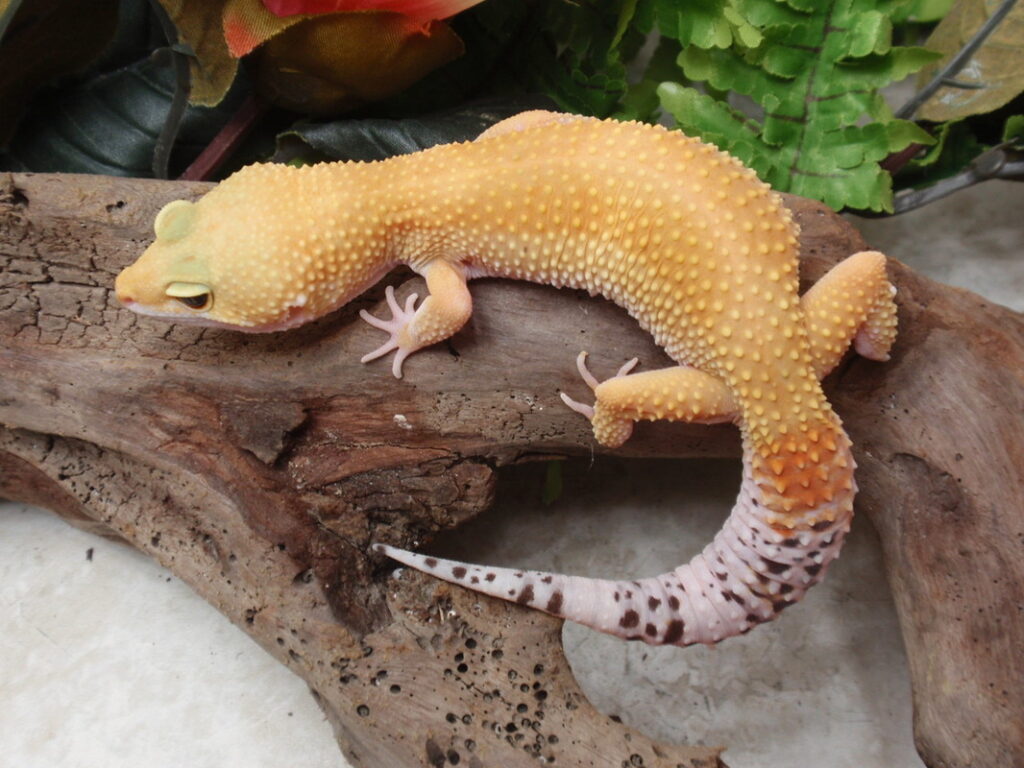
When choosing a substrate for your Leopard Geckos, keep it simple. Look for something easy to clean, safe, durable, and budget-friendly. Try to mimic their natural habitat with options like clay, pebbles, or tiles. Creating a comfortable and familiar environment for your geckos is essential for their happiness and health.
FAQs
Is Eco Earth safe for reptiles?
Eco Earth is generally considered safe for reptiles. However, proper care must be taken to maintain suitable humidity levels and cleanliness in the enclosure.
How often should I change my Eco Earth for my leopard gecko?
The frequency of changing Eco Earth depends on cleanliness and hygiene. Typically, replacing it every 2-4 months is a good practice.
What substrate is best for a leopard gecko?
Suitable substrates for leopard geckos include reptile carpets, paper towels, or natural options like clay, pebbles, stone slabs, or tiles.
When should I replace my Eco Earth?
Replace Eco Earth when it becomes soiled, loses moisture-holding capacity, or develops mold. Regularly monitor its condition.
How long does Eco Earth last?
The longevity of Eco Earth varies depending on use and maintenance, but it can last for several months with proper care.
Does Eco Earth expire?
Eco Earth does not have a strict expiration date, but its effectiveness may decrease over time if not stored properly.
Does Eco Earth smell?
Eco Earth typically has a natural earthy scent, but it should not have a strong or unpleasant odor. Foul odors may indicate issues with cleanliness.
How much water do you add to Eco Earth?
To prepare Eco Earth, mix one part substrate with two parts water by volume. Adjust water quantity to achieve the desired moisture level.
What is Eco Earth made of?
Eco Earth is primarily made from coconut husks and is a natural and eco-friendly substrate option.
Final Words:
In conclusion, after careful consideration and personal experience, I believe that Eco Earth can be a suitable substrate for them under certain conditions. Its moisture-retention properties, affordability, and ease of use make it an attractive option for creating a comfortable habitat.
However, it’s essential to be mindful of potential drawbacks, such as elevated humidity levels, dustiness, and the risk of ingestion. To make it effectively for, one must monitor humidity levels, ensure proper ventilation, and regularly clean the enclosure.
Ultimately, the choice of substrate depends on individual preferences and the specific needs of your pet. It’s crucial to strike a balance between replicating their natural environment and ensuring their safety and well-being.
So, while Eco Earth can be a good choice, it’s essential to weigh its pros and cons against other substrate options to provide the best possible living conditions for these captivating reptiles.

